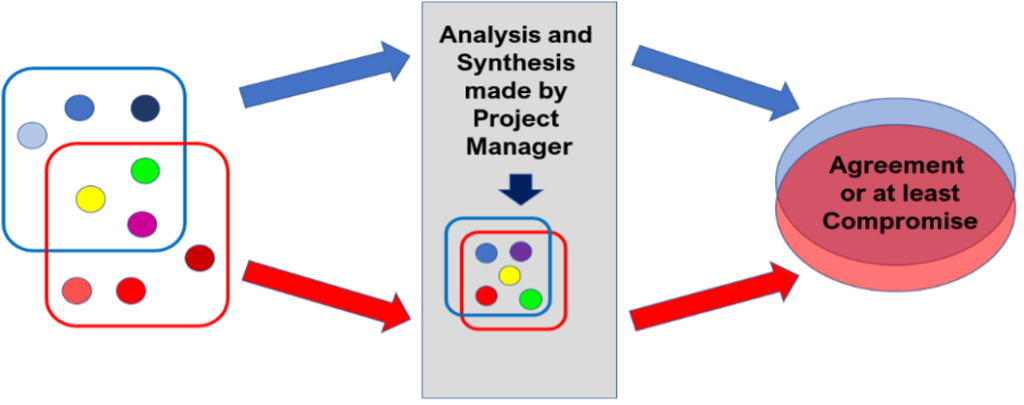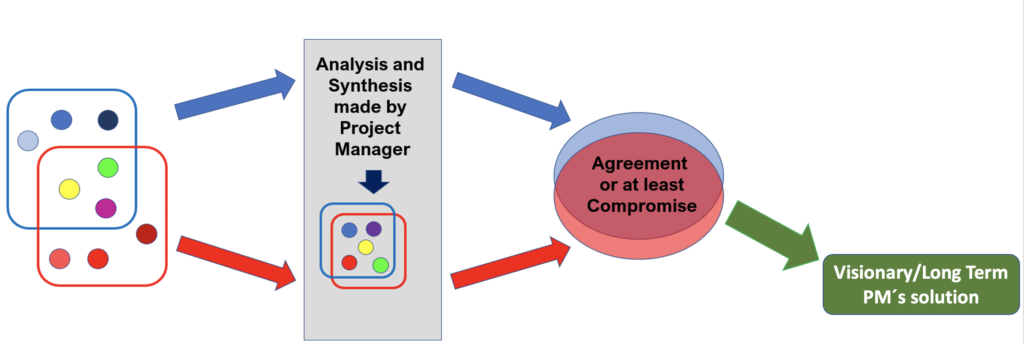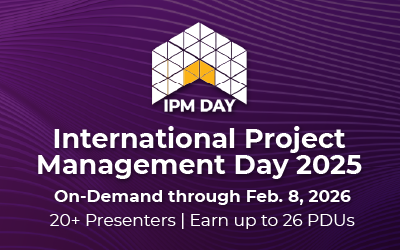Divergent-Convergent Paths Process For Conflict Management
By Luigi Morsa
December 9, 2021
Managing a team is complex and challenging at the same time. Team members naturally have different perceptions, personalities, characters, ideas, and they may be from different cultures. Getting along or minimizing conflict within a team is not easy. In managing conflict in teams, we consider two possible relationships: one where the leader interacts with team members, and one where team members interact among themselves and the leader is a “spectator”, but with a task to bring calm in difficult situations.
Managing Conflicts in Projects
At first glance, conflict management could be perceived as distant from the project management environment, but managing conflict can be extremely useful to better understand and appreciate the diverse thinking of people in a team. All this leads to the well-known Conflict Management Techniques laid out in the PMBOK® Guide. The PMBOK® Guide recommends five techniques that project managers can use to manage or eliminate conflict in project teams:
- Withdraw / Avoid
- Smooth / Accommodate
- Compromise / Reconcile
- Force / Direct
- Collaborate / Problem Solve
In the same project management guidance, the project manager is also described as a conflict manager. Among the critical skills needed to succeed as a project manager is the ability to manage and mitigate the frictions that are counterproductive and can lead to undesired sources of inefficiencies within a team. Regardless the details of the techniques, it’s worth pondering why people develop different ways of thinking and how they arrive at different conclusions and therefore divergent opinions. To address this complex question, we may consider a treatise of psychology or sociology concepts, or we can look at some parallels of how a mathematical theory is built. Our perspective draws parallels with a math theory which has no space for opinions. A math theory relies on a set of assumptions (called axioms[1]) accepted by all (or stakeholders, in a project management context) and considered as conventional truth. Through a logical process, other truths are obtained until no one questions the deductions or results. The only way to have divergence is to change the initial set of assumptions and the derived theory will then be different. A limpid example of two mathematical theories both valid, but with results and applicability much different, are the Euclidean and Non-Euclidean geometries. We can deduce that two people can have different opinions because their starting points are not exactly the same. On the other hand, when people define common starting points, the deductions, obtained by using logic, must converge toward the same results.
Dealing with Divergence
A possible strategy to resolving divergences can be based on the following sequential steps:
- Understand by a backwards process why the deductions diverge
- Identify common and different starting points
- Perform a deep analysis aimed at defining a good set of common points
- Convince the involved parties to sacrifice some starting points or “source” of disagreement
The following diagram exemplifies a Divergent-Convergent Paths Process that represents a way to obtain convergence by starting with divergent opinions.

Diagram 1: Divergent-Convergent Paths Process
We need to consider that the leader has not only the task to analyze the facts and passively identify a way to reach compromise as described and shown above. Today, those who lead need to have a vision for a team or for a company. Therefore, it is possible that the agreement reached represents only an intermediate step to go in a different direction. We can also say that the compromise is, in most cases, only a short-term decision that has the benefit of mitigating the contrast and quieting the nerves. The compromise is not likely the best solution from a strategic long-term perspective. In other words, as soon as a conflict emerges, a compromise based on the analysis described above is applied (temporary solution); while at a later time, the ultimate and most visionary solution is cleverly reached and applied. The following picture gives an idea of the whole process.

Diagram 2: Divergent-Convergent Compromise Paths Process with Project Manager’s Visionary Solution
The power of the hybrid approach relies on two main facts: ✓ Thanks to analysis and synthesis ways of thinking, the project manager is likely to understand better the varied working styles, personalities, and the ways the concerned parties think. ✓ By applying a temporary solution (compromise) as an intermediate step, it is more probable that the long term and visionary solution identified by the Project Manager will be better embraced or accepted by the team, instead of imposing this last one since the beginning.
Conclusion
Managing conflict and dealing with divergent viewpoints are unavoidable aspects of projects. Successfully navigating convergent and divergent viewpoints require strong communications skills, sound judgment, and an ability to compromise. The process described above together with continuous practice can help project managers mitigate, manage and resolve conflict. [1] An axiom, postulate or assumption is a statement that is taken to be true, to serve as a premise or starting point for further reasoning and arguments.
About the Author
Luigi Morsa (Ph.D.) is an Aerospace Engineer and Project Manager working in Germany at the consultant company SII engineering & IT. Luigi’s passion for project management has led him to contribute to two books by Dr. Harold Kerzner, the pioneer and globally recognized expert in project management. Luigi wrote two case studies for Project Management Case Studies, Fifth and Sixth Editions (Wiley, 2017, 2022) and the chapter on “Innovation Management Software” for Innovation Project Management (Wiley, 2019). In 2018, Luigi was a speaker at the Project Management Institute (PMI®) EMEA Congress to discuss the complexity of the aircraft industry market, with particular emphasis on the relationship between product and customer needs. He is the author of two other blogs—“People Innovation: A New Vision to Innovate” (2019) and “Chess and Business Strategy” (2020).




